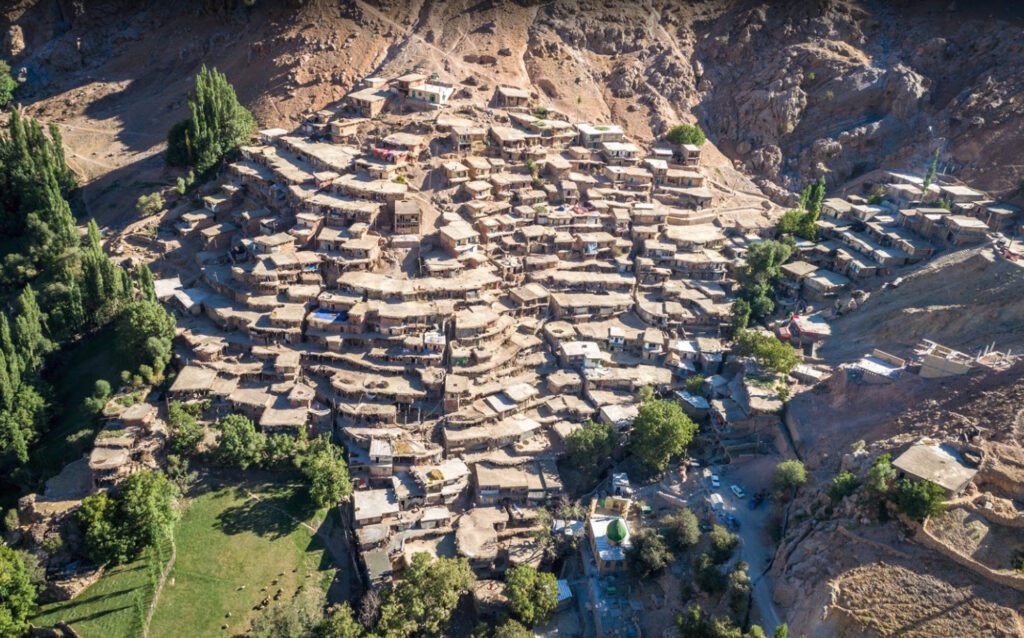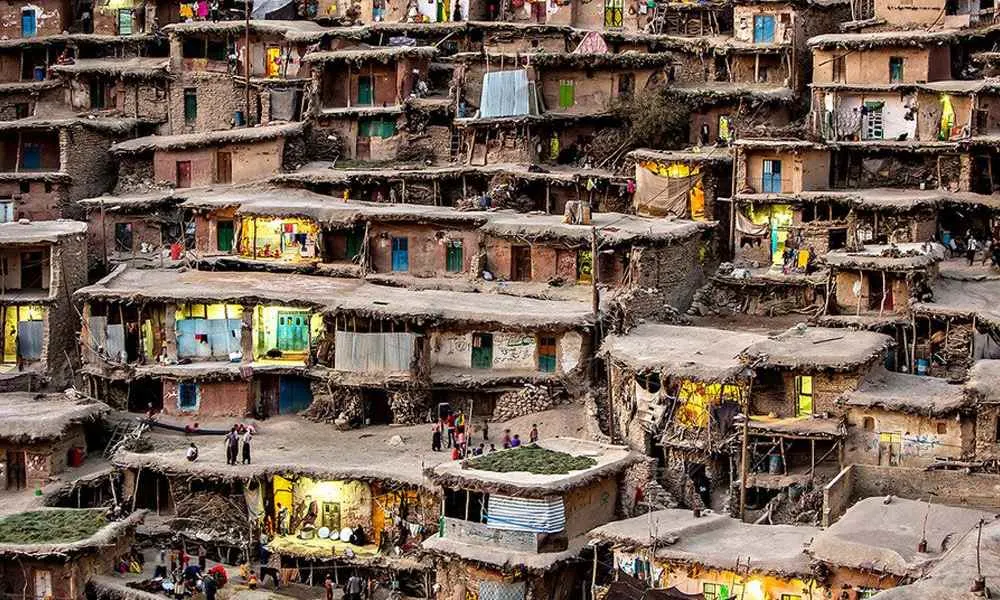Nestled in the mountainous landscape of Iran lies the unique village of ‘Sar Agha Seyyed.’ This village is famous for its unique housing where the houses are quite literally on top of each other! Surprisingly, each house’s roof serves a dual purpose. Not only do they protect the dwellings below, but they also function as pathways or yards to the houses on top. The village’s isolation is heightened in winter. When heavy snowfall blocks the roads, cutting them off completely from the outside world. Let’s dive in to learn more about the fine architecture of the houses and the culture of its residents.
Sar Agha Seyyed’s History
The history of Sar Agha Seyyed is as layered as its architecture. Established several centuries ago, the village has evolved while keeping its traditional charm. The architecture was developed out of necessity and influenced by the harsh mountainous climate.
According to sources, the village Sar Agha Seyyed got its name after the holy shrine of Seyyed Isa, known as Aqa Seyyed. Seyyed Isa is a descendant of the Shias’ seventh Imam. It is believed that he was buried underneath this village just 600 years ago. The fact that it stands on top of a shrine adds to its cultural significance. However, the exact date of the village’s origin is not known.
Over the years, the village has withstood both natural and social changes. Somehow it still has preserved a lifestyle that is rare in modern times.

Geographic and Strategic Positioning of Sar Agha Seyyed
The iconic village is located in the Miankuh-e Moguyi Rural District of the Central District of Kuhrang County in Iran. Sar Agha Seyyed is strategically perched in the Zagros Mountains and its geographical positioning has greatly influenced the village’s lifestyle. The village is 2500 m above sea level and the dwellers enjoy orchards, freshwater springs, and a refreshing climate in the mountains.
According to the census and statistics in 2016, the village has a population of around 1,698 people in over 380 households. The amount of households on the land shows a gradual increase from the figures in 2006, which was just 208. The surrounding land is abundant in oak, walnut, and willow, along with local milo shrubs. Villagers also find various shallots, mushrooms, leeks, and mountain celery for their consumption in the region.
In the surrounding areas of the village, there are also salt ponds. These salt ponds add to the natural beauty and they also serve as a source of income to the villagers. The rough landscape and elevation have necessitated the unique architectural style seen today. The village’s isolation, particularly in winter, has led to a self-reliant community.

Architectural Wonders of Sar Agha Seyyed
The architecture of Sar Agha Seyyed is a marvel. The houses are built into the mountainside, with each roof forming the pathway for the tier above. This arrangement creates a cascading effect, reminiscent of ancient amphitheaters.
The housing primarily uses stone, wood, and clay in the construction. The walls of the houses are strong and contain thick layers of clay, mud, and wood. To support the weight there are also pillars of stones and roofs with wood. The houses in the village have one door with either one or no windows. The mud and clay act as natural insulators to keep the dwellers warm inside even during the rough snow and cold in the winters.
The housing is arranged in a stairway structure and they face a mountain with a beautiful view. Each of the houses is connected both vertically and horizontally. The architectural style comes in handy as the houses are standing on a steep slope and it also maximizes space.

Cultural Insights: Life in Sar Agha Seyyed
Life in Sar Agha Seyyed is a reflection of its architecture – interconnected and community-oriented. The shared spaces foster a strong sense of community among residents. Traditions and customs are deeply rooted, with festivals and social gatherings central to the village’s cultural identity.
Villagers are mostly involved in farming, animal husbandry, and salt extraction from the nearby ponds. They are known to produce fine butter, yogurt, buttermilk, and some unique bread with what they farm and harvest. Weaving rugs and kilims are also heavily enjoyed by the villagers.
Locals often sell their produced goods like dairy products, salt, and handcrafted products to their visitors. They The villagers’ lifestyle, dictated by the seasons and their environment, offers a glimpse into a way of life with simplicity and cooperation.

Visiting Sar Agha Seyyed: Travel Tips and Best Times
The best time to visit Sar Agha Seyyed is during spring, summer, or early autumn when the weather is mild and the village is accessible. Travelers should prepare for a rustic experience, as amenities are basic. The journey to the village can be challenging but is rewarding with scenic views and the promise of a fascinating cultural experience. Winter visits are not encouraged as the roads get blocked with snow and they become inaccessible.
Conclusion
Sar Agha Seyyed is a testament to human ingenuity and resilience. Its unique architecture, rich history, and vibrant culture make it a hidden gem worth exploring. The village’s isolation, particularly in winter, adds to its allure, offering a peaceful retreat from the hustle and bustle of modern life. This village is not just a destination but a journey into the heart of tradition and simplicity.
Also read,











